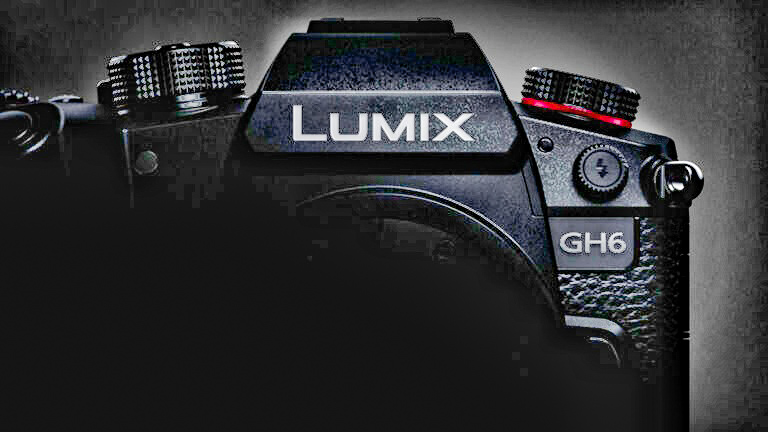-
Posts
2,531 -
Joined
-
Last visited
Content Type
Profiles
Forums
Articles
Everything posted by sanveer
-
Theoretically, if anyone does 12-bit RAW, with a colour correction, or something else baked into the codec, it should not quality as RAW, when compression ratios are con concerned. Even if most manufacturers have their own version of RAW, with varying colours. Or If, there is an element of partial de-bayering within the camera itself, no matter how minor. I feel Panasonic can CIRCUMVENT this shady Red Patent (reminds me of the stories regarding how how hundreds of Tesla's patents were stolen and registered as someone else's, back in the day), by having uncompressed RAW out, and then compressing it in a tiny module attached to the camera (like the original yagh module, but Much Smaller). The sole purpose of the module, apart from extra battery and memory like mini SSDs, could be for having a compassion SoC (they could throw in a 5G chip for direct broadcast or cloud storage). Compression post recording should not attract any kind of the shady Patent application issues.
-
Why not for video. The sensor documentation seems go mention photo only, as does the lack of any specific video frame rate. OCL in the 2×2 configuration is usually when the sensor is a higher resolution one, and the Quad Bayer/ TetraCell type CFA literally merges colour pixel information, merging 4 pixels onto one. Here the sensor is 20MP. Why would they wanna reduce the resolution. Unless the difference in autofocus performance accuracy between conventional on-chip lended and ones in the 2x2 configuration is so tiny, that the faster processing (,perhaps), of the 2x2 OCL is preferred. Still not sure why its worded as "R, G, B primary color mosaic filters on chip (Quad Bayer structure)." Unless it's a case of poor articulation or some translation issue (from Japanese to English?).
-
The sensor does 120fps at Full Res, 12-bit, which would be great for both Photography as well as for Shooting RAW video. "Each pixel readout method deployment for the specific mode (1) Normal, (2) Phase difference, (3) Single pixel, (4) HDR ◆ H driver, V driver and serial communication circuit on chip ◆ 10 bits / 12 bits A/D converter on chip ◆ 14 lane (8 lane + 6 lane) SLVS-EC output ◆ R, G, B primary color mosaic filters on chip (Quad Bayer structure)." I am not sure what this HDR in (4) is supposed to imply? Will it have better HDR, and perhaps something on the lines of what's on Smartphones, given the much faster readout? Also, why it Quad Bayer mentioned? For a 20MP sensor? Will it UpRes, like on QuadBayer sensors with larger CFAs?
-
Not sure. I am guessing that laser autofocus or some other autofocus assist, to put it at-par with PDAF may be employed.
-
The effectiveness of LIDAR has been questioned, with the contention that laser and other sensors can pretty much replace its, and beat it in many scenarios.
-
It would need a 1/10th size focus module of the one that is the one which manufacturers are making, as an addition on the camera via the hotshoe.
-
-
Next Generation (smartphone level) Laser autofocus assist?
-
I find the world less insane outside of the Google-FB-Twitter Universe. I have been planning to get a feature phone for the longest, and perhaps use it on weekends. Even Apple isn't really safe. That was the breaching point in all HK and other protests. If they can do it for one government or organisation, they could do it for anyone. And Google keeps you locked into an ecosystem where all major functions (search, OS, maps, video/youtube etc), is owned and controlled but the same company. I have noticed maps keep tracking you, even when you switch off GPS and disable the mobile data. Also, apps that ask for permission for camera and photo gallery during installation, probably take photos and videos, even when unnecessary. I am planning to block the front camera completely, since I take selfies quite rarely. Tech companies probably know more about us, than our friends and families. Way more.
-

Wrote a review of Wonder Woman 1984 so you don't have to watch it!
sanveer replied to Andrew Reid's topic in Cameras
Wow. That was pretty intense. In a great way. We're now gonna face racism, or sexism or reverse something else. -

Pro camcorder ergonomics - why are they so rubbish?
sanveer replied to Andrew Reid's topic in Cameras
1. Maybe because there are 3 broad pro/prosumer camera, namely Hybrid, ENG and Cinema. There is obviously a slight overlapping, here and there, between the 3 (or hot swapping), thanks to better designs and hybrids (like the C70 and S1H), they still have many people swearing by one design over the other. 2. More ergonomic cameras should, ideally, also be smaller, and thus lesser bragging rights. For both the client and for anyone else who may be lurking around. And the whole Brain box so promoted by RED, has ensured many other players follow atlesst some model that has one. But RED's model, like most tiny brains, need so much extra, just to make it usable. 3. Most film cameras need a lot of rigging and cinematographers and directors constantly watch the feed, so they need a lot more stuff for the rigging (live feed). Other reasons including the fact that Cinema cameras need better cooling, many cinema zooms are enormous and so require heavier box shaped backs, and storage and mic placement could be very ergonomically unsettling. Not sure why more hybrids don't have the tilting EVF of the GX7 and the multi-direction articulation of the S1H. Being able to use both the EVF and LCD, simultaneously, could be very useful in checking things like focus or changing settings while looking through the viewfinder. Maybe you could have a Poll on Possible Designs, that people want the most. -
Wow. Thanks for the headsup.
-
I read somewhere that early reviewers have to sign some sort of agreement regarding reviewing the new processors, in the various computers. Hopefully, independent buyers will be able to help with actual usage experince and issue, instead of ones by people who've been given free laptops or early access, in exchange for lack of completely transparent reviews.
-
We may have to start using FCP, again. DaVinci was getting addictive 😆
-
Interesting. Would love to try the new MacBook Air. I may test it before I actually get one. I haven't used a Mac in the longest. I used to hate Word and Excel on it. For video and photo editing it's pretty neat. The Air is priced pretty well, for the apparent performance. Would also love to see some independent reviews before taking a call.
-
Interesting. Since it uses bluetooth for the time code sync, I am guessing that other (cheaper) standards may be open as possible timecode sync alternatives(?), as long as Zoom allows it (either open source or vendor agreements?). Isn't this the product you're talking about for syncing. I am curious, don't newer bluetooth standards matter for faster and more accurate sync (and 5.0 also allows for 2 devices to be operated, simultaneously), or it's just the first frame (or first few, as multiple timecode messages, with the necessary information?), and then the last (or last few) to check whether there is accurate syncing happening between frames (and sound, and other information) to know the accuracy of the sync. https://www.timecodesystems.com/product/ultrasync-blue/ Theoretically, shouldn't any smartphone be able to do this? Like an App on a smartphone do the same thing, at a fraction of the cost (especially if Zoom officially has a licence agreement with them), and with many other features that this may lack. Like the LTC Timecode GenerLTCator Pro App.
-
Hahaha. Good one. I always find those clickbait expensive cinema camera vs iBoss comparisons videos so delusional. This one screws all of those, and some more. 👍
-
I guess more information on the SoC will slowly start trickling in, and we'll know specs and performance figures. I am guessing their graphics processing should be enough for most tasks too. I personally want a huge tablet (18 inch?) on which desktop grade editing would be possible. Retina means it's a fancy name for not even giving customers 1080p and covering it with wordplay. That was smart, but dishonest.
-
Oh ok. I am guessing that it probably implies that it has a smartphone setup, instead of a laptop or desktop type, in terms of s processor. It's an SoC, instead of merely a processor. One cannot really change the RAM on a smartphone. I obviously could be wrong, but, Apple usually exaggerates things. Their Retina display was like 720p, when many smartphones were offering QHD and more. So they're probably just selling smartphones SoCs like they invented the wheel.
-
Interesting. Was this in the presentation? ARM designs the cores. They also have designs for the (multi core) processor function, but which is limited to connectivity architecture and instructions (DynamIQ vs big.LITTLE for example). So SoC designers (such as Samsung, Qualcom, Apple, Mediatek etc) actually mix and Max combinations of ARM processors, laying them within the processor, based upon the budget, power and processing requirements, product which is made for etc. Most of the engineers figure out what the best combination of cores and instruction for the job is, the size of the node, size of the various cache etc). Apple isn't probably doing anything significantly different form the othe processor designers. Apparently the McBook Air's (performance cores?) were running at 3.20 GHz. I am wondering how many Cores are running at that frequency. I would guess 4, at Max. Which is similar to Smartphone ARM processor structure where the cores are divided between efficient ones (mostly for browsing and other non-demanding functions) and performance cores (used for shooting photo and video, editing work and everything else requiring processor heavy work to be done). https://browser.geekbench.com/v5/cpu/4648107
-
I agree. @IronFilm will give us some insights we may have missed. I do with it had a fint little LCD. It makes me worried about battery life or some other things one needs to check. Probably which track is being played back or something else.
-
If its based on the ARM design (most likely the Cortex X1, with another lower re-deisgned core), theoretically Snapdragon and Exynos should be able to pull off high end laptop processors too (if they can record 8k, in compressed H.264/H.265) on smartphones, their processors already seem capable enough). Nice that processors are getting smaller and a lot kroe efficient. Also, the monopoly of over pricing processors is wearing off. Hopefully Snapdragon and Exynos join the race, sooner than later.
-
Yes. Wireless can be a problem in when one doesn't expect it to (RF and dropouts mostly). The Tascam are also great with backup track recorded at –6/–12 dB. But this obviously doesn't need a backup. And the price is pretty good for what it offers. Only wish it had a tiny LCD for atleast checking the battery or other things.
-
It's also competition to the Tentacle Sync TRACK E Pocket Audio Recorder with Timecode Support, since they both have 32-bit and time code. But the Tentacle at $349 is a lot more expensive.




